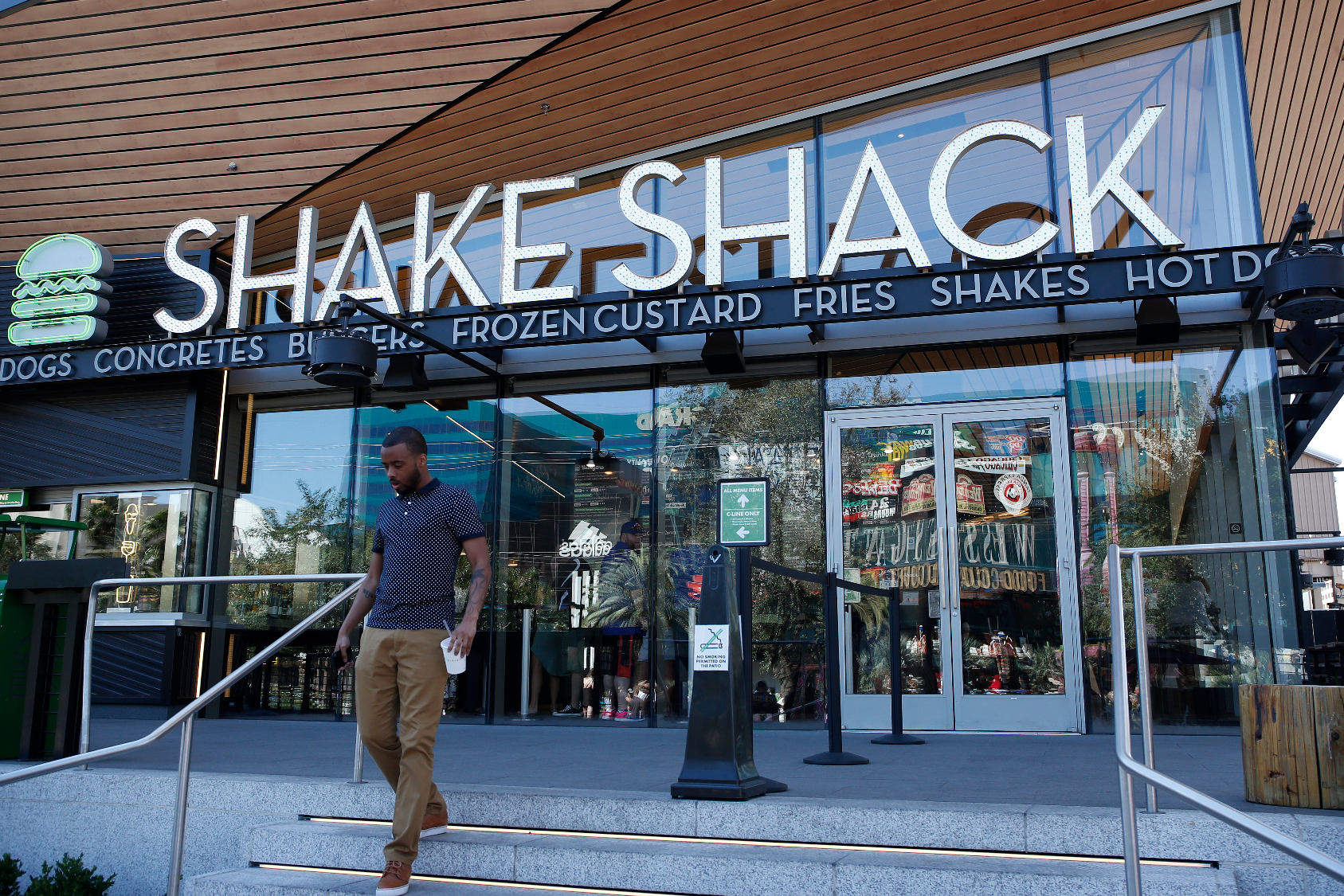Shake Shack Plans for Large Expansion, but Moves Deliberately

Photo Caption: Shake Shack delivered its fourth quarter earnings report on Thursday.
Skift Take
For a company that touts the value of its technology, Shake Shack is surprisingly slow on the draw to innovate in the space.
Move fast and break things, formerly Facebook's famous mode of operation, does not apply at Shake Shack. Instead, the company seems to be taking a slow and deliberate approach to its future growth.
After reporting a positive 2017 with both sales and revenue up 33.6 percent year over year, shares of Shake Shack were trading down after hours.
Shake Shack, which started as a local company in New York, has grown in the US to include 20 states and Washington D.C., and has become an example of a fast-growing national chain aiming to disrupt the good-food-fast business — not unlike the way that Chipotle did from its start 25 years ago.
The slow-and-steady approach is reflected in the chain’s guidance for 2018, as it expects same-store sales to remain the same across its restaurants. It’s also reflected in the continued messaging around mobile ordering, kiosk ordering, and delivery service partners. These plans aren’t much different than we’ve already heard.
Growth in Delivery… Eventually
Shake Shack continues to test delivery integrations with Caviar, DoorDash, and Postmates. CFO Tara Comonte hinted that a key factor to choosing a delivery partner is to have orders that go straight into the restaurant’s point-of-sale system; a technical order and delivery function that has become mission critical to exclusive restaurant delivery partnerships. In fact, Grubhub CEO Matt Maloney said that point of sale integration was “absolutely critical” in Grubhub’s recent deal to become the exclusive delivery partner of Yum Brands’ Taco Bell and KFC. “If we didn’t have the POS integration capabilities, we wouldn’t have been selected by Yum to be their national partner.” he said.
“We are a coveted delivery partner for deliver companies,” said Shake Shack CEO, Randy Garutti, in Thursday's earnings call. “We want to make sure all the things that can drive sales are there for the long term before we pursue partnerships. We want to make sure we meet the demand that’s out there in a good way.”
Digital Ordering and Loyalty
Orders placed via the Shake Shack mobile app continue to have a higher average check than orders placed in-store. Shake Shack plans to capitalize on this by implementing web-based ordering “soon,” according to Garutti.
Kiosks, as made famous in the chain’s Astor Place location in New York, are also a part of this growth strategy — though don’t expect another cashier-free store. Instead, expect kiosk-cashier hybrids at a “handful” of store locations. “It’s a hybrid approach,” said Garutti.” Mostly kiosks with a little cashier. We want to see what people want to choose.”
In addition, he hinted at a coming loyalty program. “We are increasingly focused on rewarding best customers and incentivizing repeat business,” he said. Expect in-store digital ordering to connect to the mobile app in order to “recognize” customers as they come through the door.
Internal Infrastructure
Garutti emphasized Shake Shack’s commitment to build a “strong foundation to deliver significant long-term opportunity.” This is two-fold, he explains, as Shake Shack plans to invest in both its staff and its internal technology. Internally, the company will revamp its general ledger and end-to-end supply chain software. The initiative is dubbed “project concrete” and will cost the chain between $4 and $6 million in 2018 as the company finds and chooses the right technology partners, according to Comonte.
